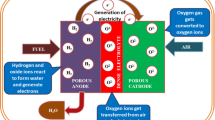Abstract
A new method for the direct synthesis of Li2CO3 powders by membrane electrolysis from LiCl solution is demonstrated in this paper, where a novel electrolysis system combining ventilation, agitation and loop filtration functions was reported. The aim of this work is to explore the effect of the starting concentration of LiCl on the phase and micromorphology of Li2CO3 crystals and thereafter to explore the mechanism of crystallization and grain growth law. Scanning electron microscopy (SEM) images indicate that the particles become irregular polycrystalline from well-defined flower-like and the micro-crystals change from lamellar to needle-like and subsequently to smaller globular granules, and the surface of the crystals becomes smooth with LiCl concentration increasing from 50 to 400 g·L−3. The crystalline phases of the different samples were characterized using powder X-ray diffraction (XRD) and the results prove that pure Li2CO3 crystals can be obtained in a single step by the electrolysis method. The particle size distributions show that both volume mean crystal sizes and the full width at half maximum (FWHM) decrease when the starting LiCl concentration increases from 50 to 300 g·L−3 and also decreases from 400 to 300 g·L−3.






Similar content being viewed by others
References
Atems B, Hotaling C. The effect of renewable and nonrenewable electricity generation on economic growth. Energy Policy. 2018;112(1):111.
Zhang JF. The battery grade lithium carbonate ushers in development opportunities. Chin J Nonferrous Met. 2010;425(5):23.
Feng GF, Zhang X. The effect of the development pattern of the world lithium industry on the lithium industry in China and the countermeasures. Chin J Rare Met. 2003;27(1):57.
Luo XJ. Improvement of the electrochemical performance of spinel LiNi0.5Mn1.5O4 by stabilization of the electrode/electrolyte interfaces with the electrolyte additive. J Alloy Compd. 2018;730(5):23.
Mu PT. Battery-grade lithium carbonate preparation using hydrogenation decomposition ion exchange coupling technique. Chengdu: Chengdu University of Technology; 2015. 1.
Sun YZ, Song XF, Wang J, Yu JG. Preparation of Li2CO3 by gas–liquid reactive crystallization of LiOH and CO2. Cryst Res Technol. 2012;47(4):437.
Meng LR, Wang JL. Overview of lithium carbonate and its preparation. Chin J Power Sources. 2011;35(12):1602.
Buriak JM, Toro C. Rising to the challenge. Chem Mater. 2015;27(15):5149.
Zhan TT, Jiang WF, Li C, Luo XD, Lin G, Li YW, Iao SH. High performed composites of LiFePO4/3DG/C based on FePO4 by hydrothermal method. Electrochim Acta. 2017;246(8):322.
Chen QB, Ji ZY, Liu J, Zhao YY, Wang SZ, Yuan JS. Development of recovering lithium from brines by selective-electrodialysis: effect of coexisting cations on the migration of lithium. J Membr Sci. 2018;548(2):408.
Wang HY, Zhong Y, Du BQ, Zhao YJ, Wang M. Recovery of both magnesium and lithium from high Mg/Li ratio brines using a novel process. Hydrometallurgy. 2018;175(1):102.
Zhao ZW, Si XF, Liu XH, He LH, Liang XX. Li extraction from high Mg/Li ratio brine with LiFePO4/FePO4 as electrode materials. Hydrometallurgy. 2013;133(2):75.
Chen Y, Tian QQ, Chen BZ, Shi XC, Liao T. Preparation of lithium carbonate from spodumene by a sodium carbonate autoclave process. Hydrometallurgy. 2011;109(1–2):43.
Zhao MY, Ji ZY, Zhang YG, Guo ZY, Zhao YY, Liu J, Yuan JS. Study on lithium extraction from brines based on LiMn2O4/Li1−xMn2O4 by electrochemical method. Electrochim Acta. 2017;252(10):350.
Ooi K, Sonoda A, Makita Y, Chitrakar R, Tasaki-Handa Y, Nakazato T. Recovery of lithium from salt-brine eluates by direct crystallization as lithium sulfate. Hydrometallurgy. 2017;174(12):123.
Liu XH, Chen XY, Zhao ZW, Liang XX. Effect of Na+ on Li extraction from brine using LiFePO4/FePO4 electrodes. Hydrometallurgy. 2014;146(5):24.
Li KK, Zhang YF, Cao ST, Zhang Y. Current efficiency of Ga electrodeposition under different anions concentrations. Rare Met. 2016;35(4):349.
Sitando O, Crouse PL. Processing of a Zimbabwean petalite to obtain lithium carbonate. Int J Miner Process. 2012;102(1):45.
Sun YZ. Study on the crystallization of lithium carbonate. Shanghai: East China University of Science; 2010. 1.
Zhou XC. The process research of lithium absorption from brine and production of lithium carbonate. Changsha: Central South University; 2013. 5.
Li FQ, Wang M, Zhu ZH. A method for preparing lithium hydroxide by Saline Lake brine electrolysis. China Patent; CN 103924258 A. 2014.
Paidar M, Fateev V, Bouzek K. Membrane electrolysis—history, current status and perspective. Electrochim Acta. 2016;209(8):737.
Zhang TA, Fu DX, Dou ZH, Liu Y, Pan XJ, Lv GZ, Zhao QY, Niu LP, Zhang WG, Wang L. A method for direct preparation of Li2CO3 from LiCl. China Patent; CN 106976894 A. 2017.
Brandt F, Haus R. New concepts for lithium minerals processing. Miner Eng. 2010;23(8):659.
Zhang TA, Liu Y, Dou ZH, Pan XJ, Lv GZ, Zhang ZM, Zhao QY, Niu LP, Fu DX, Zhang WG. A system for the preparation of metals’ oxides from its’ chlorides by electrolytic. China Patent; CN 107236965 A. 2017.
Turan AZ, Baloglu H, Unveren E, Bulutcu AN. The behaviour of Nafion® 424 membrane in the electrochemical production of lithium hydroxide. J Chem Technol Biotechnol. 2016;91(9):2529.
Liu XH, Chen XY, He LH, Zhao ZW. Study on extraction of lithium from salt lake brine by membrane electrolysis. Desalination. 2015;376(9):35.
Liang YJ, Che YC. The Handbook of Inorganic Thermodynamics Data. Shenyang: Northeastern University Press; 1993. 209.
Kallyni I, Nerilso B, Rocha RC, Biaggio SR, Jesus I, Vicente M. Electrodegradation of the acid green 28 dye using Ti/β-PbO2 and Ti-Pt/β-PbO2 anodes. J Environ Manage. 2016;183(1):306.
Zhang WJ. A review of the electrochemical performance of alloy anodes for lithium-ion batteries. J Power Sources. 2011;196(1):13.
Acknowledgements
This study was financially supported by the National Natural Science Foundations of China (No. U1508217 and U1710257) and the Fundamental Research Funds for the Central Universities (No. N162505002).
Author information
Authors and Affiliations
Corresponding author
Rights and permissions
About this article
Cite this article
Pan, XJ., Zhang, TA., Dou, ZH. et al. A new method for direct synthesis of Li2CO3 powders by membrane electrolysis. Rare Met. 37, 716–722 (2018). https://doi.org/10.1007/s12598-018-1053-7
Received:
Revised:
Accepted:
Published:
Issue Date:
DOI: https://doi.org/10.1007/s12598-018-1053-7




